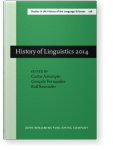The relation of gesture to thought and language
From language origin to cognitive science
The relationship between gesture and language has typically been theorized in terms of gesture preceding language along a continuum of evolving symbolization. Recent research in cognitive science and allied fields suggests that, from the beginning, gesture has figured constitutively, along with vocalization, in the communicative process, as it continues to do. This evolved symbiotic relationship between vocalization and co-speech gestures, constructed atop a common neural network and marked by emergent properties, figures in the representation, processing, and transformation of thought – in the embodiment of cognition – and provides an infrastructure for action understanding, for reading the intentions of others.
